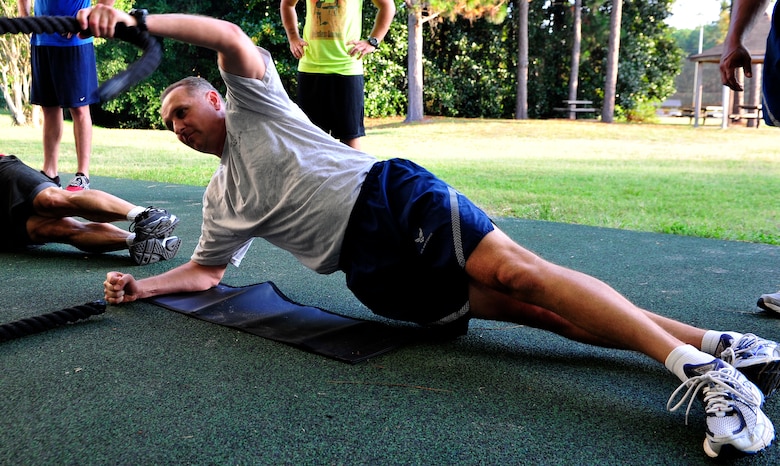Impaired Core Stability as a Risk Factor for the Development of Lower Extremity Overuse Injuries: A Prospective Cohort Study
De Blaiser C, De Ridder R, Willems T, Vanden Bossche L, Danneels L, Roosen P. Am J Sports Med. 2019 Apr 29:363546519837724. doi: 10.1177/0363546519837724. [Epub ahead of print]
https://www.ncbi.nlm.nih.gov/pubmed/31034240
Take Home Message: A college freshman with dynamic postural control limb imbalances, decreased hip extension strength, or decreased core muscle endurance during bridging exercises is more likely to develop a lower extremity overuse injury.
Core stability is important for lower extremity alignment and control, and may relate to lower extremity overuse injuries. However, we lack information on how different tests of core performance are linked to injury risk among recreationally active young adults. Therefore, the authors performed a prospective 1.5-year study among 139 healthy freshmen students enrolled in physical education courses, and evaluated if different measures of core strength, endurance, or control related to future overuse lower extremity injury. The different core measurement tests can be found in the Table. The authors defined a lower extremity overuse injury as any lower limb injury that caused limitations in physical activity without a defining injury event. The authors also recorded injury exposure time based on the total time spent participating in practice and sport classes, such as basketball and soccer. Thirty-four individuals developed an overuse injury with an incidence rate of 1.2 injuries per 50 hours of sport participation. Students with greater differences between left and right limb star excursion balance test performance, decreased hip extension as compared to hip flexion strength, or poor performance on prone bridging exercises were more likely to develop overuse lower extremity injuries than other students. However, combinations of tests failed to accurately predict who would get an injury (predictive accuracy was only 53%).
While the tests of core stability failed to accurately predict who would develop an overuse injury, the new findings suggest that poor core performance on common clinical tests are associated with the risk of overuse injury due to decreased strength and stability. Hence, this reinforces the idea that it is beneficial to address core control, strength, and endurance in injury prevention programs to reduce the burden of lower extremity overuse injuries among young and recreationally active individuals. The authors acknowledged that there are other factors that contribute to overuse injuries, such as aerobic fitness, alignment measures, and strength of other muscles that could have been assessed to help predict who would get injured. Since this sample was limited to a smaller sample of recreational collegiate students, it would be interesting to see how the injury risk factors may perform among a larger sample, or in a sample of competitive athletes. Further, it would be interesting to determine what combination of core measures and other suggested factors would be most predictive of lower extremity overuse injury risk as a form of clinical screening or intervention. In all, the findings suggest that star excursion balance test bilateral performance, hip strength, and bridging performance are important to consider for risk of overuse lower extremity injuries. Clinical injury prevention programs should consider implementing exercises to improve core function.
|
Test Name
|
Description
|
|
Dynamic postural control test for balance on a single limb
while reaching as far as possible along a tape measure in 3 directions |
|
|
Handheld Dynamometry for the Hip and Trunk Strength
|
Core strength measures using maximal isometric measurements
for tri-planar hip motions, and for trunk flexion and extension |
|
Abdominal endurance measurement holding a plank position
|
|
|
Measure of back muscle endurance holding a back plank
position |
|
|
Measure of lateral core muscle endurance holding a side
plank position |
|
|
Endurance measure consisting of repeated lumbopelvic
movement assessed for quality of movement, control of adjacent areas, preferential movement to one side, breathing, and number of quality repetitions |
|
|
Proprioception assessment of repositioning accuracy of the
lumbopelvic region following a dynamic task |
|
|
Functional movement assessment of 5 consecutive lateral
stepping down off of a box, scored based on movement patterns of the lumbopelvic region |
Questions for Discussion: What core neuromuscular control exercises have you implemented into injury prevention protocols? What other intrinsic measures besides core outcomes do you use to evaluate lower extremity overuse injury risk?
Written by: Alexandra F. DeJong
Reviewed by: Jeffrey Driban
Related Posts:
Isolation or Integration Core Exercises? That is the Question…
2 Out of 3 Is Bad: Starter, Disability, and Poor Core Endurance


